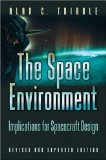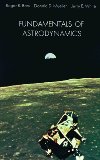NASA dicit:
Landsat 9 is the latest satellite to continue the legacy of global observations of Earth’s land surface. With unmatched longevity, accuracy, and coverage, the Landsat program has been the cornerstone of global land imaging since 1972. Landsat 9 continues this tradition, and will carry us into the next 50 years of Earth observations. The two instruments aboard will make the most advanced measurements of any Landsat satellite.
Design and construction of the spacecraft and its instruments is managed by NASA’s Goddard Space Flight Center in Greenbelt, Maryland, and operation and archiving of the data is managed by the U.S. Geological Survey. Goddard and Ball Aerospace each built one of the instruments, and the spacecraft was built by Northrop Grumman.
The Landsat Program is a series of Earth-observing satellite missions jointly managed by NASA and the U.S. Geological Survey (USGS). Landsat satellites have been consistently gathering data about our planet since 1972. They continue to improve and expand this unparalleled record of Earth’s changing landscapes for the benefit of all.
Video credit: NASA’s Goddard Space Flight Center/Matthew R. Radcliff (USRA): Lead Producer/Aaron E. Lepsch (ADNET): Technical Support/Matthew R. Radcliff (USRA): Editor/Matthew R. Radcliff (USRA): Narrator/Kate Ramsayer: Writer/Jeffrey Masek (NASA/GSFC): Scientist/Music Marble Place by Matias Suescun [SACEM], published by KTSA Publishing [SACEM], available from Universal Production Music









 Subscribe to blog posts using RSS
Subscribe to blog posts using RSS










